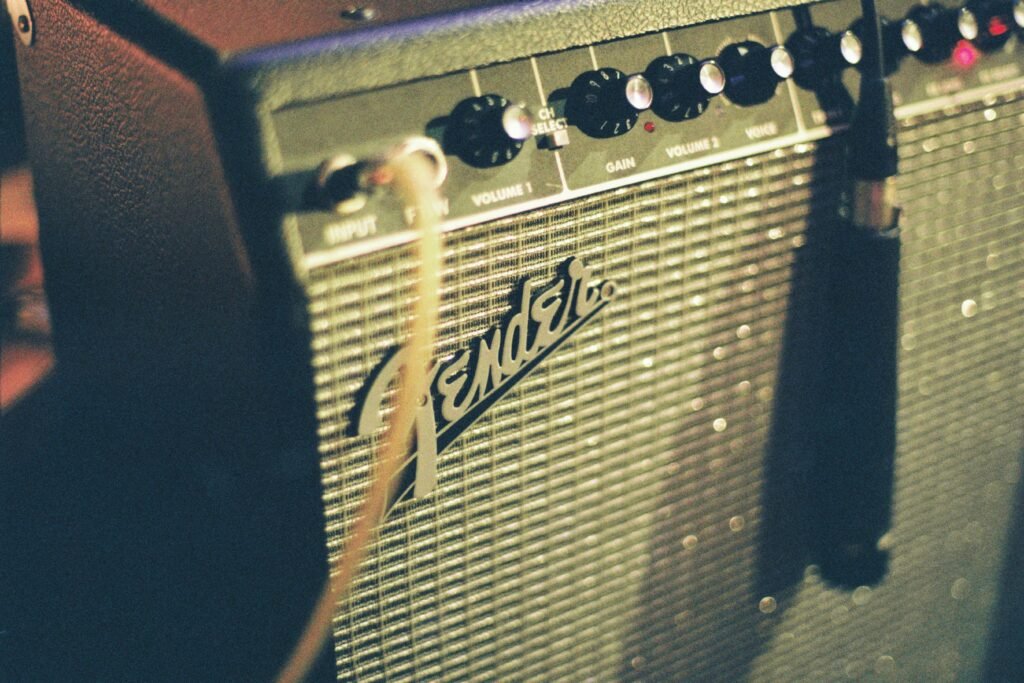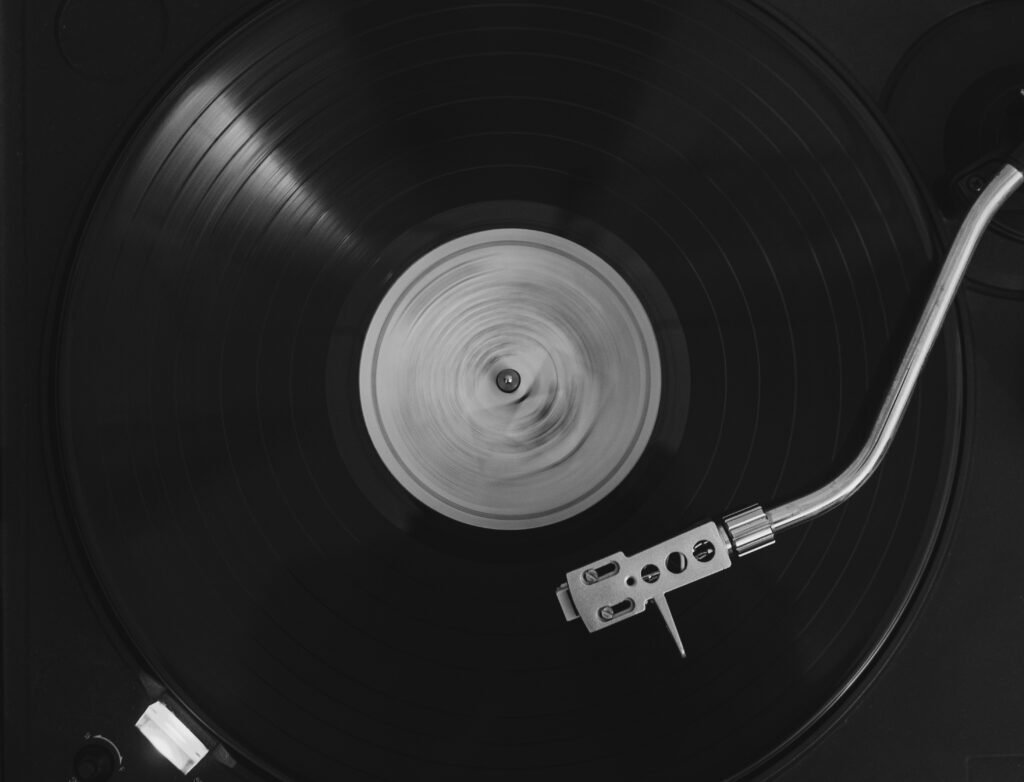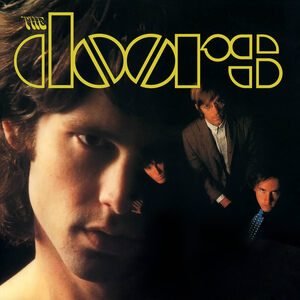Released in January 1967, The Doors, the debut album by The Doors, stands as one of the defining records of 1960s rock, marking a shift in how rock music could sound and what it could express. Positioned at a moment of cultural upheaval, the album emerged during a time when rock was evolving from teen-centric pop to a genre capable of exploring complex themes. This was no accident; The Doors set out with an ambitious, almost theatrical intention, aiming to craft songs that delved into the darkness of the human psyche, blending poetry with blues and psychedelia.
Artistic Intentions
In contrast to many debut albums that introduce bands in raw, unpolished forms, The Doors feels meticulously constructed and conceptually driven. The Doors had formed just two years prior, but Jim Morrison, Ray Manzarek, Robby Krieger, and John Densmore had quickly honed their collective voice, creating a sound that melded blues, jazz, and Eastern influences—a signature that would underpin the band’s work. This debut did not depart from their essence; rather, it revealed it, plunging listeners into the hypnotic, haunting universe they would continue to explore in subsequent albums.
Sonic Exploration

The sonic landscape of The Doors is as distinctive as it is immersive, with production values that underscore the album’s haunting and otherworldly mood. Produced by Paul A. Rothchild, the album captures a striking balance between clarity and rawness, allowing the unique textures of each instrument to shine while maintaining a slightly dark, mysterious ambiance. Rothchild, known for his meticulous production techniques, and engineer Bruce Botnick created a sound that was polished yet intimate, giving listeners the sensation of sitting in a smoky club, face-to-face with the band. The production isn’t lo-fi or overly gritty, but it’s far from glossy; instead, it has a deep, shadowed quality that enhances the album’s more sinister undertones.
Musical Arrangements
Musically, The Doors is defined by its unusual instrumental arrangements. Instead of a bass guitar, Ray Manzarek’s Fender Rhodes piano bass fills in the low end, freeing Robby Krieger’s electric guitar to weave melodic, often unpredictable lines that feel loose and improvisational. Manzarek’s Vox Continental organ, a signature sound throughout the album, adds an eerie, carnival-like quality that deepens the sense of disorientation, especially in tracks like “Alabama Song (Whiskey Bar)” and “Light My Fire.” Morrison’s voice, smoky and alluring, glides above the instrumentation, at times near-whispered and seductive, at others forceful and hypnotic. His vocals, with their dynamic range and dramatic phrasing, act almost as an additional instrument, serving as a guide through the album’s emotional terrain.
Genre Elements
Genre-wise, The Doors is an eclectic fusion that defies simple categorization. At its core, the album draws heavily from blues rock, evident in songs like “Back Door Man,” where Morrison’s vocal intensity and Krieger’s bluesy guitar riffs recall the grit and sensuality of classic blues standards. However, the album also incorporates jazz rhythms and scales, especially in John Densmore’s drumming, which leans on Latin and jazz influences to create rhythms that are both unpredictable and hypnotic.
Psychedelic rock elements are woven throughout, most notably in the extended instrumental sections of “Light My Fire” and “The End,” where the band creates sprawling, trance-like passages that evoke a sense of boundlessness. Eastern influences appear as well, particularly in “The End,” where the exotic drone-like tones build an atmosphere of mysticism and foreboding.
Lyrical Analysis

The lyrics of The Doors album are rich with themes of desire, existential dread, rebellion, and transcendence, weaving a tapestry of intense, often dark imagery that sets it apart from the love-centric pop of the late 1960s. Jim Morrison, the band’s lead vocalist and lyricist, imbued these songs with a poetic depth and complexity that reflects his interest in literature, philosophy, and psychology. The album is peppered with recurring motifs that explore the duality of light and darkness, freedom and confinement, life and death, as well as the wild allure of the unknown.
Themes
One of the album’s central themes is the tension between carnal desire and existential despair, especially in songs like “Break On Through (To the Other Side)” and “Light My Fire.” These songs convey a longing to escape societal norms and break free into new realms of experience—both physically and mentally. Morrison’s lyrics speak of a desire to transcend limits, but there’s always an undercurrent of danger in that pursuit, as if the enlightenment sought might come at a high cost. In “Light My Fire,” this idea of sensual desire extends metaphorically to the unknown, hinting at an all-consuming passion that could lead to either revelation or destruction.
“The End,” perhaps the album’s most ambitious and haunting track, illustrates Morrison’s lyrical prowess at its peak. Here, he combines surreal, apocalyptic imagery with references to Greek mythology and Freudian concepts, creating a hypnotic, dreamlike journey into the subconscious. This song reveals Morrison’s fascination with Oedipal themes, delving into familial and societal taboos with a boldness that was shocking for the era. The lyrics are abstract and symbolic, inviting interpretation rather than providing a clear narrative. “The End” stands out not just as a song, but as an intense psychological statement on the darkness and violence embedded within human nature.
Lyrical Depth
Morrison’s lyricism is characterized by its openness to interpretation and its layered, poetic quality. Rather than delivering straightforward stories, he employs a stream-of-consciousness style that encourages listeners to extract their own meaning. His verses often read like modern poetry, drawing on a variety of influences from Rimbaud to Nietzsche, mixing introspective musings with provocative lines that border on the taboo. This lyrical approach invites listeners into Morrison’s psyche, but it also invites them to confront their own internal fears and desires.
Emotional Impact
Emotionally, the lyrics of The Doors album are deeply evocative and, at times, unsettling. There’s an unmistakable urgency in Morrison’s words, as if he’s wrestling with forces beyond his control. His lyrics provoke contemplation, especially as he questions societal norms and confronts existential anxieties with fearless honesty. Tracks like “The Crystal Ship” evoke a melancholic beauty that feels both nostalgic and otherworldly, while songs like “Back Door Man” exude raw, rebellious energy, bordering on aggression. Morrison’s words rarely offer comfort; instead, they challenge and unsettle, evoking emotions that range from fascination to unease.
Cohesion and Flow

The Doors achieves a rare cohesion and flow that elevates it from a simple collection of songs to a unified artistic journey. The album’s tracks progress with a sense of purpose and narrative intent, mirroring the emotional and thematic descent into darkness that Morrison and the band aimed to explore. From the energetic urgency of the opening track, “Break On Through (To the Other Side),” to the sprawling, unsettling finale of “The End,” each song feels like a chapter in a larger story, pulling the listener deeper into The Doors’ enigmatic world.
The track progression is carefully crafted to give the album a dynamic, almost cinematic flow. Early tracks like “Soul Kitchen” and “Twentieth Century Fox” offer a more upbeat, bluesy experience, drawing listeners in with seductive grooves and relatable themes of freedom and rebellion. As the album progresses, however, it transitions into darker, more introspective territory with songs like “End of the Night” and “The Crystal Ship.” These songs slow the tempo and introduce a haunting, surreal mood, building a gradual tension that leads to the climactic, nearly 12-minute opus, “The End.” This final track acts as both an emotional and thematic culmination, a journey through Morrison’s psyche that encapsulates the album’s existential themes.
Thematic Consistency
Thematic consistency is another strength of The Doors, as the album remains focused on its exploration of the unknown, the taboo, and the boundaries between life and death. While each track stands on its own musically and thematically, there’s an unmistakable sense of unity that ties the songs together. The band’s distinct style—a blend of blues, jazz, and psychedelic rock—serves as the album’s connective tissue, creating a sonic palette that is unique yet cohesive. Even when the tempos and tones shift from one song to the next, the lyrical focus on desire, freedom, and existential questioning creates a thematic throughline that sustains the album’s intensity and atmosphere.
Despite the album’s experimentation with genre and mood, there are no jarring shifts; rather, each song feels like a natural evolution from the last. This fluidity gives the album a sense of intentionality and completeness, as though The Doors had planned every transition to guide the listener on an immersive journey. This cohesion and flow are a testament to the band’s maturity and vision, especially given that The Doors was their debut. As a whole, the album feels more like a singular piece of art than a debut rock record, a seamless blend of lyrical introspection and sonic innovation that challenges, excites, and ultimately captivates from beginning to end.
Standout Tracks and Moments
The Doors is packed with unforgettable tracks, each adding depth to the album’s complex atmosphere. Yet some tracks stand out as quintessential representations of The Doors’ artistic vision, offering glimpses into the musical and lyrical innovation that would come to define their legacy.
Light My Fire
One of the album’s undisputed highlights is “Light My Fire,” which became The Doors’ breakout hit and a defining song of the era. Clocking in at over seven minutes, it was unusually long for a pop single, but the band’s gamble paid off. The track’s extended instrumental break showcases Robby Krieger’s fluid, flamenco-inspired guitar solos and Ray Manzarek’s cascading organ lines, which snake and intertwine to create a hypnotic effect.
The song captures the band’s knack for blending raw sensuality with musical sophistication, with Morrison’s provocative lyrics and commanding vocal delivery amplifying the track’s allure. “Light My Fire” transcends mere rock and roll; it’s a psychedelic journey that captures the thrill and danger of desire in a way few songs before or since have managed.
The End
Another standout is “The End,” a haunting, epic composition that pushes the boundaries of rock. Over nearly twelve minutes, the track builds from a slow, ominous opening into a cathartic release of primal energy. “The End” is as much a piece of performance art as it is a song, with Morrison’s surreal, incantatory lyrics exploring themes of existential dread, forbidden desire, and mortality. Notably, the song’s controversial “Oedipal” section shocked audiences and marked Morrison as a fearless lyricist willing to delve into forbidden territory. The atmospheric interplay of Manzarek’s droning organ and Krieger’s Eastern-influenced guitar riffs heightens the track’s hypnotic quality, creating a sense of timelessness and depth that encapsulates the album’s descent into the subconscious.
Break On Through (To the Other Side)
“Break On Through (To the Other Side)” also deserves mention for its driving energy and defiant lyrics. Opening the album, it introduces The Doors’ dark, intense aesthetic while showcasing Morrison’s ambition to transcend conventional limitations. Densmore’s Latin-inspired drumming gives the song a pulsating urgency, while Morrison’s lyrics—particularly the line “She gets high”—subtly hint at altered states and the longing to push beyond the everyday.
Memorable Moments
Several memorable moments pepper The Doors, each contributing to the album’s distinct flavor. In “The Crystal Ship,” Morrison’s melancholy delivery of “the streets are fields that never die” is hauntingly poetic, evoking a bittersweet sense of longing. Similarly, the blues-driven “Back Door Man” offers one of the album’s rawest performances, with Morrison’s gritty vocals and Krieger’s searing guitar riff embodying rebellion and sensuality. The track reveals the band’s blues roots, with an unapologetic swagger that captures the essence of the band’s provocative spirit.
Throughout the album, Manzarek’s keyboard work consistently provides memorable moments, from the darkly whimsical organ intro of “Alabama Song (Whiskey Bar)” to the eerie, sustained chords that linger at the end of “The End,” leaving the listener suspended in silence. It’s this careful attention to detail—the choice of silence, the phrasing of lyrics, the lingering of notes—that gives The Doors its unforgettable quality. Each track builds upon the last, creating a series of standout moments that serve as emotional and sonic peaks, capturing the audacity and intensity that makes The Doors more than just an album—it’s an immersive experience, with tracks and moments that continue to resonate decades after their release.
Artistic Contribution and Innovation

The Doors holds a significant place in the landscape of 1960s rock, setting itself apart as a boundary-pushing debut that reshaped expectations for rock music’s potential. In a decade known for experimentation, The Doors not only embraced the rebellious and psychedelic spirit of the times but pushed it to its limits. Where other albums of the era flirted with abstract themes, The Doors dove headlong into existential exploration, challenging norms around lyrical content, song structure, and genre boundaries. With this album, The Doors offered a fresh vision for rock that was darkly poetic, philosophical, and subversive, leaving an indelible mark on the music industry.
Songwriting
One of the album’s most striking innovations is its approach to lyrical content. While many rock bands of the era were rooted in themes of peace, love, and youth culture, The Doors delves into themes of death, desire, and existential crisis. Morrison’s lyrics were unapologetically cerebral and confrontational, drawing from poetry, philosophy, and psychoanalysis. Songs like “The End” and “Break On Through” don’t just entertain—they provoke, inviting listeners to confront their fears and question their boundaries. By weaving mythological and Freudian motifs into his lyrics, Morrison introduced a type of poetic depth rarely seen in mainstream rock at the time, expanding the possibilities of what rock lyrics could convey.
Genre-blending
Musically, The Doors defies easy categorization, blending blues, jazz, and psychedelic rock into a cohesive sound that was groundbreaking in its day. Unlike the guitar-heavy focus of many of their contemporaries, The Doors gave equal importance to the organ and keyboard, with Ray Manzarek’s eerie, carnival-esque soundscapes adding an atmosphere that felt otherworldly. His use of the Vox Continental organ as a lead instrument was unconventional in rock and became a defining feature of The Doors’ sound. This emphasis on keyboard-driven arrangements, combined with Robby Krieger’s experimental approach to guitar and John Densmore’s jazz-inflected drumming, gave The Doors a distinct sonic identity that set it apart from other rock albums of the 1960s.
Production
Production-wise, the album was innovative in its use of studio techniques to create an immersive, almost cinematic listening experience. Producer Paul A. Rothchild and engineer Bruce Botnick worked closely with the band to capture a sound that was both polished and raw, allowing The Doors’ intricate compositions to come through with clarity while preserving a sense of live immediacy. The production style prioritized spaciousness and atmosphere, creating a feeling of intimacy that was rare in an era when rock recordings were often more straightforward. Tracks like “The End” used extended silences, echo effects, and reverb to build tension, creating an experience that felt as psychological as it did musical.
Closing Thoughts

The Doors is a masterpiece of musical and lyrical innovation that defined not only the band’s identity but also the trajectory of rock music in the late 1960s. As a debut, it is staggeringly ambitious, blending poetry, philosophy, and genre-defying soundscapes to create an experience that feels both immersive and transformative. The album’s strengths lie in its hauntingly cohesive vision and its seamless marriage of dark, introspective lyrics with atmospheric production and skilled musicianship. Jim Morrison’s provocative lyricism, Ray Manzarek’s haunting organ lines, Robby Krieger’s intricate guitar work, and John Densmore’s jazz-inflected drumming create a sonic landscape that still feels fresh and captivating over 50 years later.
While its bold exploration of existential themes may be intense for some listeners, The Doors does not shy away from its vision. It is unrelenting in its depth and fearless in its pursuit of the unknown, qualities that could alienate more casual listeners but reward those who are open to its layered complexity. The album’s experimental nature, especially on tracks like “The End,” means it occasionally veers away from conventional song structures, but this boldness is part of its lasting appeal and part of what makes it such an iconic piece of rock history.
Place in Career
In the context of The Doors’ career, this album represents a foundation on which the band would build, though some argue they never surpassed the impact of this stunning debut. Its influence on rock, alternative, and even jazz and electronic music is incalculable, inspiring countless artists to experiment with song structure, instrumentation, and lyrical depth. The Doors captures the band’s youthful daring and creative unity, embodying the spirit of an era in a way that resonates well beyond its time.
Official Rating
The Doors deserves a perfect 10 not only because it broke new ground but because it continues to inspire and provoke thought, demonstrating the lasting power of art that challenges, mystifies, and compels. It’s an album that invites listeners to step into the shadows and confront the depths of human experience, a fearless debut that remains as intriguing and transformative today as it was upon its release.
It’s rare for any album to achieve this level of cohesion, innovation, and emotional impact, and The Doors does so with both confidence and an uncompromising creative spirit. This is an essential listen, not just for fans of rock, but for anyone seeking music that resonates across generations and reshapes our understanding of what an album can be.
